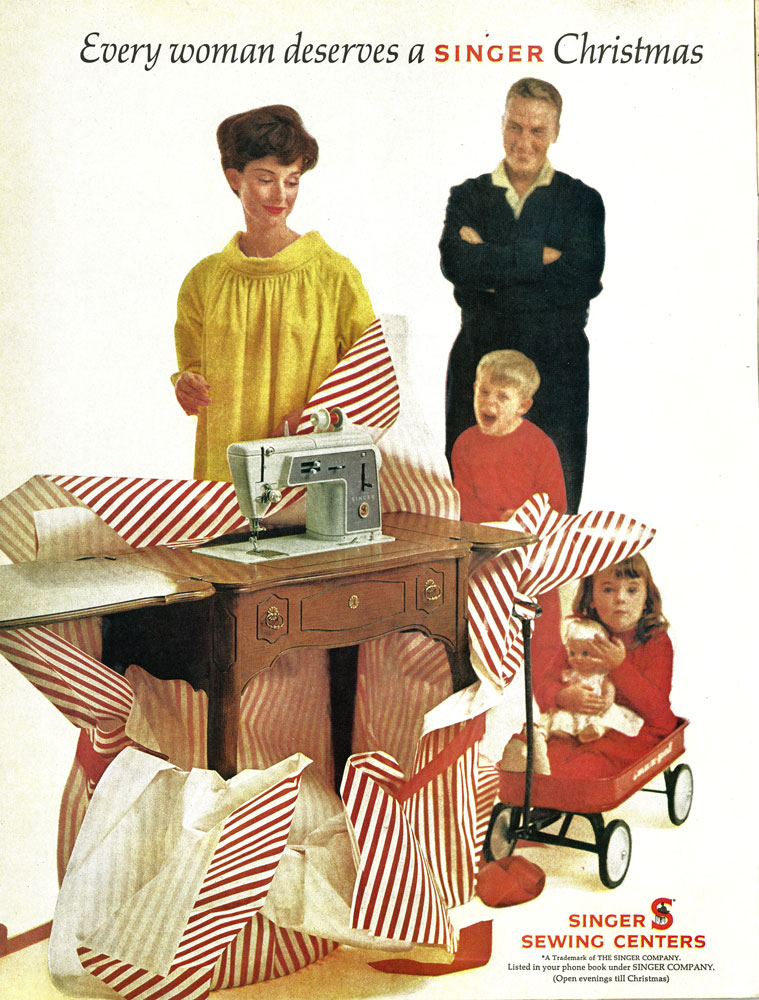
What the December 1963 Copy of Life Magazine Taught Me About Advertising
Galleries of shockingly tasteless “Mad Men”-era ads are often posted on social media, but I wasn’t sure what I’d find in the copy of Life magazine covering the funeral of President Kennedy, dated December 6, 1963. Even its mailing label shows it comes from a different era, addressed to “Mrs. John S. Welch.”
As a current ad agency employee, I was more curious as to what a complete issue of the magazine would look like, rather than review selected samples of the most backward and out-of-date ads.
Approaching the magazine as part of a complete issue was interesting to me. When I was very young, my family recorded a complete broadcast of “The Blues Brothers” on ABC’s “Night at the Movies.” As we watched the same VHS recording year after year, the commercials became increasingly dated and funny. Rather than one commercial on its own, the two-hour recording became a cross-section of what any evening of 1980s broadcast television could have looked like.
And while I’ve seen many individual ads from the 1960s before, sitting down to read a complete issue of Life was a new experience.
I was surprised at how wide-ranging the articles were. Topics included music, books, politics, healthcare, travel and, of course, large feature stories about the death of President Kennedy and the country’s reaction. Scrolling through and bouncing from topic to topic felt more to me like perusing my Facebook feed than today’s niche magazines.
Looking at the advertising, one theme that particularly stuck out to me was party planning. It was early December, and the holiday season was close. But so many ads and articles spoke to the reader as a party host. Ritz, Budweiser, Gilbey’s Gin and Smirnoff all directly mentioned dinner parties associated with their products. Many included full recipe ideas in their ads.
Smirnoff’s clever headline was “How to throw a party without letting it throw you” as part of an 8-page mini inset filled with drink recipes. Dr. Pepper’s ad proposed serving your party guests Dr. Pepper hot, poured over lemon.
All these recipes left me feeling like Life magazine was more like Pinterest, filled with party ideas and fun projects to take on. A number of advertisements and articles featured bulleted or step-by-step instructions, something that YouTube has largely taken over in our modern space. Many ads offered to have readers clip out part of the ad and send it to the business to have coupons returned to them. The coupons remain the same, but text clubs or liking social media posts has replaced the postal service.
Also, while certain aspects of American life are radically different from December 1963, many experiences remain consistent. A heartfelt story from an 18-year-old survivor of a suicide attempt did not contain the more current phraseology of “mental health,” but much of the article could be reprinted today in Teen Vouge: “To anyone who is hopelessly depressed, who may even be contemplating suicide, I say that no matter how deep the abyss—and it seems to that, surely, no one still alive was sunk more deeply than I—you can still escape it.”
One question I had when I picked up the magazine was how bad the sexism would be. Are modern compilations of dated, sexist ads a fair representation or do they only cherry-pick the worst examples?
I found the “Mad Men”-era reputation for sexist advertising was very well earned. There were many photos of men on couches with adoring women off to the side or in the most offensive case, on the floor.
“There are two ways to a woman’s heart.” “What woman wouldn’t love to get a Beauty Sachet.” “Every woman deserves a Singer (sewing machine).” “Nothing but nylon makes you feel so female.” “She’ll love you as she does Du Barry.” “If you love to feel like a pampered female.”
All appeared as headlines or copy.
Equally surprising was how many ads played to other stereotypes. The modern complications of sexist ads, but many of the others began with other stated targets of other stereotypes. “Men: Buy life insurance for your family.” “Every man on your gift list will thank you,” “Lucky Strike separates the men from the boys,” etc., etc.
This technique is still used occasionally, and not always to the advertiser’s benefit. Radio ads that begin with “Hey, sports fans!” usually makes me—a very big sports fan—find something else to listen to quickly.
But it did make me wonder if part of what is so obviously perceived to us as sexist today is partially rooted in the idea that so many more ads of this era were eager to declare who they thought they should talk to, even before they introduced what they were talking about.
It’s easy to take our niche media and digital targeting for granted. As I flipped through the pages of Life (and its hints of Facebook, YouTube, and Pinterest but with very different design), I realized that if I had been tasked with writing an ad for that very general and mass audience, it would have been tempting to narrow the target to a more manageable size.
I’m not looking to excuse dated stereotypes about what women (or men) should be, but like watching a two-hour VHS of broadcast television, reading a complete issue of Life helped me see these ads more as a product of their time and the medium they had to carry their work to the public.






